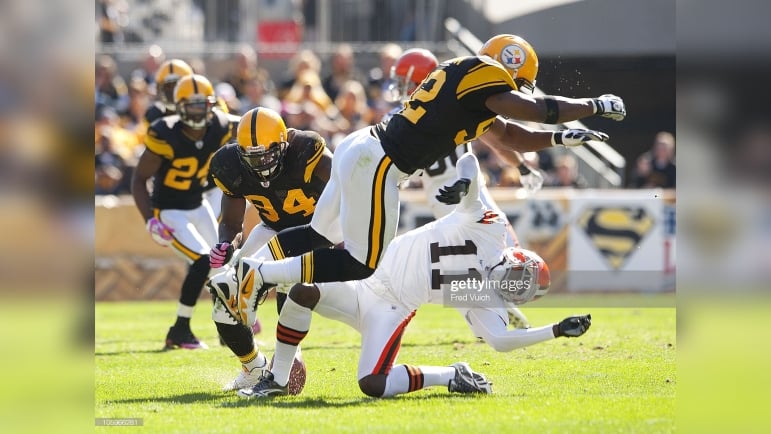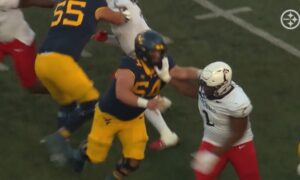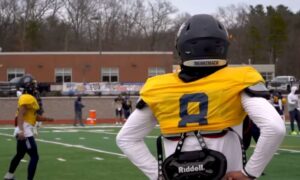Ike Taylor’s Pittsburgh Steelers somewhat infamously helped usher in a new era of player safety rules over a decade ago. Thanks to teammates like James Harrison in particular, the NFL began cracking down on certain types of hits. We suddenly learned an awful lot about what you can and cannot do to “defenseless receivers”.
Those Steelers teams adjusted, however, even if not in the manner the NFL wanted entirely. And Taylor is confident that today’s players are going to adjust to the new hip-drop tackle rule as well. But perhaps not without unintended consequences, he seems to suggest.
“It’s been a lot of high ankle sprains. It’s been a lot of legs broken off of that hip[-drop] tackle rule”, he said on the Bleav in Steelers podcast yesterday, during which he compared the situation to that which his defense experienced in the early 2010s.
“Now, on the contrary, I remember they changed the target for us, because we was putting a lot of people to sleep”, he said, referring to concussions. “A lot of people was going to sleep when they were playing the Pittsburgh Steelers”.
The NFL announced new points of emphasis in protecting defenseless players after Harrison concussed two Cleveland Browns in one game. His hits on Mohamed Massaquoi and Joshua Cribbs forced both out of the game. Cribbs was a runner on the play in which Harrison hit him, however, so he did not benefit from protections.
Roughing the passer in this era also faced much more scrutiny as pass rushers adjusted. They had to recalibrate their strike zone to make sure they’re not hitting too low or too high. For other players, however, in most situations, as they knew, there was no “too low”.
“We said, ‘You know what, since y’all got a target rule and y’all want to find us, we just gonna start breaking ACLs”, Taylor recalled. “’That’s all we’re gonna start doing. So we going for your knees and your knees only. Y’all wanted these rules changed, so this is what we doing. Since y’all giving us a new target, guess what our target will be. That knee. And we coming for knees’”.
And they did start hitting knees, though not intentionally, perhaps, but as a consequence of lowering the strike zone. I recall one hit by Harrison on a Tennessee Titans player that caused some discussion relative to the new emphasis.
Taylor comes from the old school, where, frankly, they don’t seem to take concussions as seriously. Their priority is their physical ability to play football, and they know a torn knee can end a career. He shared that some opponents told them they’d rather the Steelers defenders concuss them than blow their knees out.
I think that attitude is much less prevalent today, yet that doesn’t make mechanical injuries any less significant. As a defender, even, Taylor understands the logic behind the new rule banning hip-drop tackles. “But I really do get the hip-drop, because it’s been them high ankle sprains and them compound fractures and your legs be getting broken”, he said.
Hip-drop tackles are not extremely common, and to be clear, not all are banned. The rule requires that a player swivel while dropping his weight onto the lower extremities of his opponent. It seems almost unavoidable to tackle with a hip-drop technique to make a play, though. We’ll see how defenders adjust and how the NFL officiates it in 2024. Head coach Mike Tomlin suggested that the NFL will primarily officiate it after games through fines rather than flags.








